There are four concentric shells A,B, C and D of radii and respectively. Shells B and D are given charges and respectively. Shell C is now earthed. The potential difference is
The correct Answer is:D
To solve the problem, we need to find the potential difference VA−VC given the conditions of the concentric shells. Let's break down the solution step by step.
Step 1: Understand the configuration
We have four concentric shells A, B, C, and D with radii a,2a,3a, and 4a respectively. Shell B has a charge of +q and shell D has a charge of −q. Shell C is earthed, meaning its potential VC=0.
Step 2: Determine the potential at shell C
Since shell C is earthed, we set its potential VC=0. The potential at any point due to a charged shell can be calculated using the formula:
V=kQr
where k=14πϵ0, Q is the charge, and r is the distance from the center.
Step 3: Calculate the potential at shell A
The potential at shell A (VA) is influenced by the charges on shells B and D. The contributions to the potential at shell A from these shells can be calculated as follows:
1. Contribution from shell B (at 2a):
- Since shell A is inside shell B, the potential due to shell B at shell A is:
VB=k(+q)2a
2. Contribution from shell D (at 4a):
- Shell D is outside shell A, so the potential due to shell D at shell A is:
VD=k(−q)4a
Step 4: Combine the potentials
Now we can combine the contributions to find the total potential at shell A:
VA=VB+VD=kq2a−kq4a
Step 5: Simplify the expression for VA
To combine the terms, we need a common denominator:
VA=2kq4a−kq4a=(2kq−kq)4a=kq4a
Step 6: Calculate the potential difference VA−VC
Since VC=0:
VA−VC=VA−0=VA=kq4a
Step 7: Final result
Thus, the potential difference VA−VC is:
VA−VC=kq4a
Summary
The potential difference between shell A and shell C is given by:
VA−VC=kq4a
We have four concentric shells A, B, C, and D with radii a,2a,3a, and 4a respectively. Shell B has a charge of +q and shell D has a charge of −q. Shell C is earthed, meaning its potential VC=0.
Since shell C is earthed, we set its potential VC=0. The potential at any point due to a charged shell can be calculated using the formula:
V=kQr
where k=14πϵ0, Q is the charge, and r is the distance from the center.
The potential at shell A (VA) is influenced by the charges on shells B and D. The contributions to the potential at shell A from these shells can be calculated as follows:
- Since shell A is inside shell B, the potential due to shell B at shell A is:
VB=k(+q)2a
- Shell D is outside shell A, so the potential due to shell D at shell A is:
VD=k(−q)4a
Now we can combine the contributions to find the total potential at shell A:
VA=VB+VD=kq2a−kq4a
To combine the terms, we need a common denominator:
VA=2kq4a−kq4a=(2kq−kq)4a=kq4a
Since VC=0:
VA−VC=VA−0=VA=kq4a
Thus, the potential difference VA−VC is:
VA−VC=kq4a
The potential difference between shell A and shell C is given by:
VA−VC=kq4a
Topper's Solved these Questions
- ELECTROSTATICSBook:DC PANDEYChapter:ELECTROSTATICSExercise:SUBJECTIVE_TYPE
Explore 6 Videos
- ELECTROSTATICSBook:DC PANDEYChapter:ELECTROSTATICSExercise:Check point 1.1
Explore 10 Videos
- ELECTROSTATICSBook:DC PANDEYChapter:ELECTROSTATICSExercise:Level 1 Objective
Explore 82 Videos
- ELECTROSTATIC POTENTIAL AND CAPACITORSBook:DC PANDEYChapter:ELECTROSTATIC POTENTIAL AND CAPACITORSExercise:(C) Chapter exercises
Explore 50 Videos
- GRAVITATIONBook:DC PANDEYChapter:GRAVITATIONExercise:All Questions
Explore 120 Videos
Similar Questions
Four concentric conducting spherical shells P, Q, R and S of radii a, 2a, 3a and 4a respectively. Shell P and S are given charges q and −q respectively. If shell R is grounded then potential difference (VP — VR) is (where V, and VR are potential at surfaces of P and R respectively)
View SolutionFigure shows three concentric thin spherical shells A, B and C of radii a, b and c respectively. The shells A and C are given charges q and -q respectively and the shell B is earthed. Find the charges appearing on the surfaces of B and C.
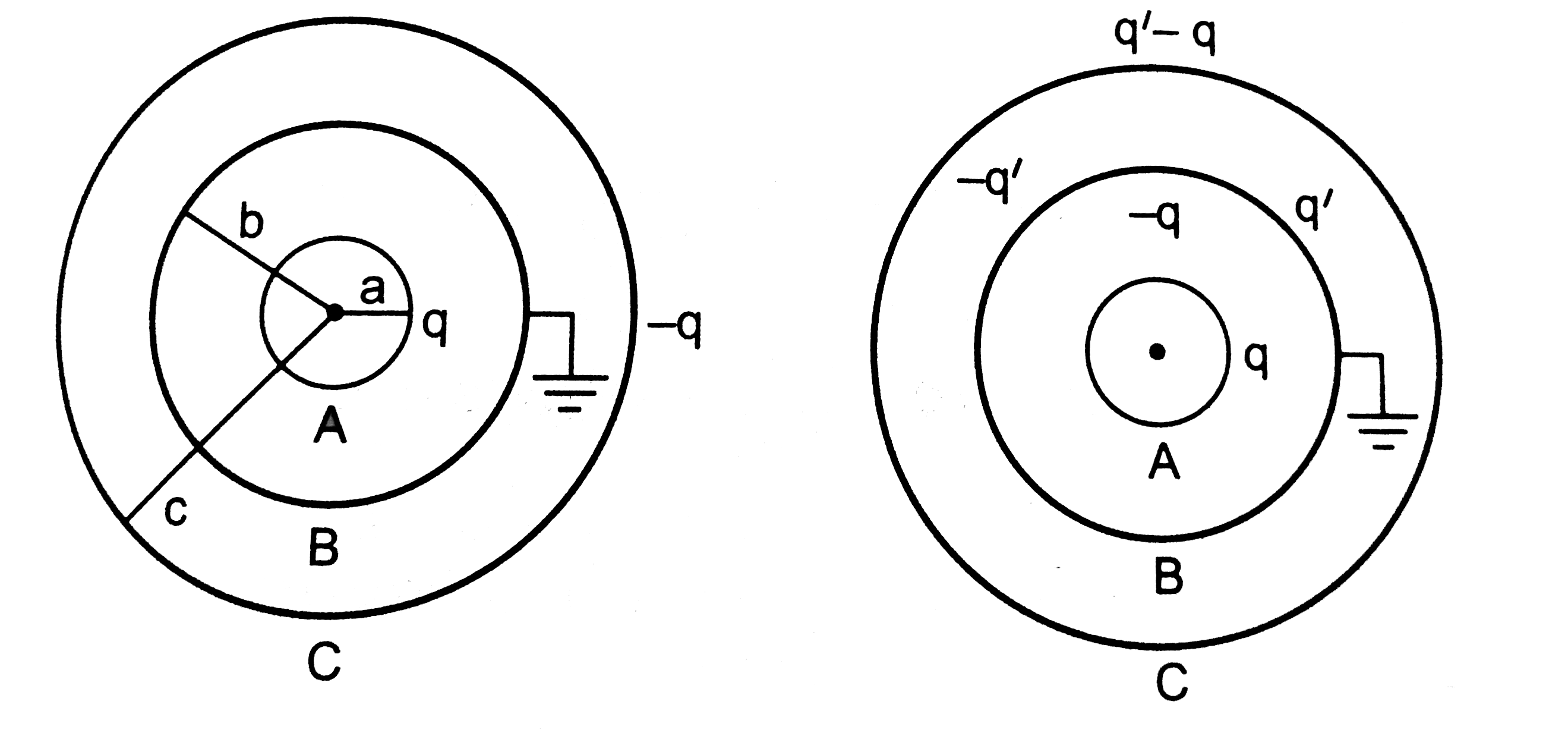
View Solution
Knowledge Check
There are four concentric shells A,B, C and D of radii a,2a,3a and 4a respectively. Shells B and D are given charges +q and −q respectively. Shell C is now earthed. The potential difference VA−VC is k=(14πε0)
AKq2aBkKq3aCKq4aDkq6aThere are four concentric spherical shells A, B, C and D of radii R, 2R, 3R and 4R respectively. Net charge on all the spherical shells are same and equal to Q. If VA,VB,VC)andVD represent electric potentials of A, B, C and D respectively, the magnitude of VD=V.
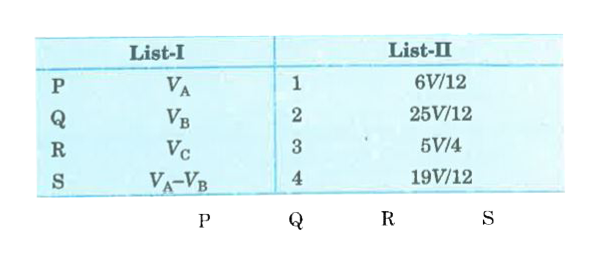 APQRS1324BPQRS1243CPQRS2431DPQRS4231
APQRS1324BPQRS1243CPQRS2431DPQRS4231Two concentric spherical conducting shells of radii 'a' and 2a are initially given charges +2Q and +Q respectively as shown. The total heat dissipated after switch 'S' has been closed is (where k=14πε0)
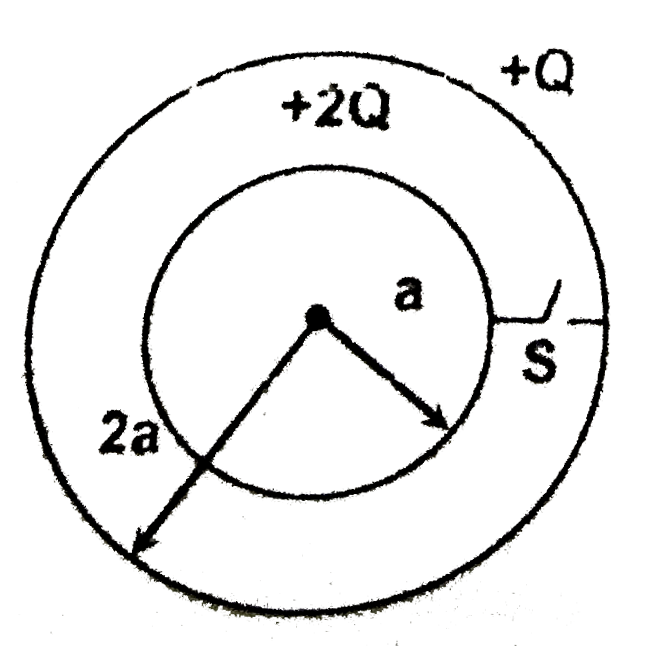 A5kQ24aBkQ2aCkQ22aDkQ24a
A5kQ24aBkQ2aCkQ22aDkQ24a
Figure shows a system of three concentric metal shells, A, B and C with radii a, 2a and 3a respectively. Shell B is earthed and shell C is given a charge Q. Now if shell C is connected to shell A, then find the final charge on the shell B
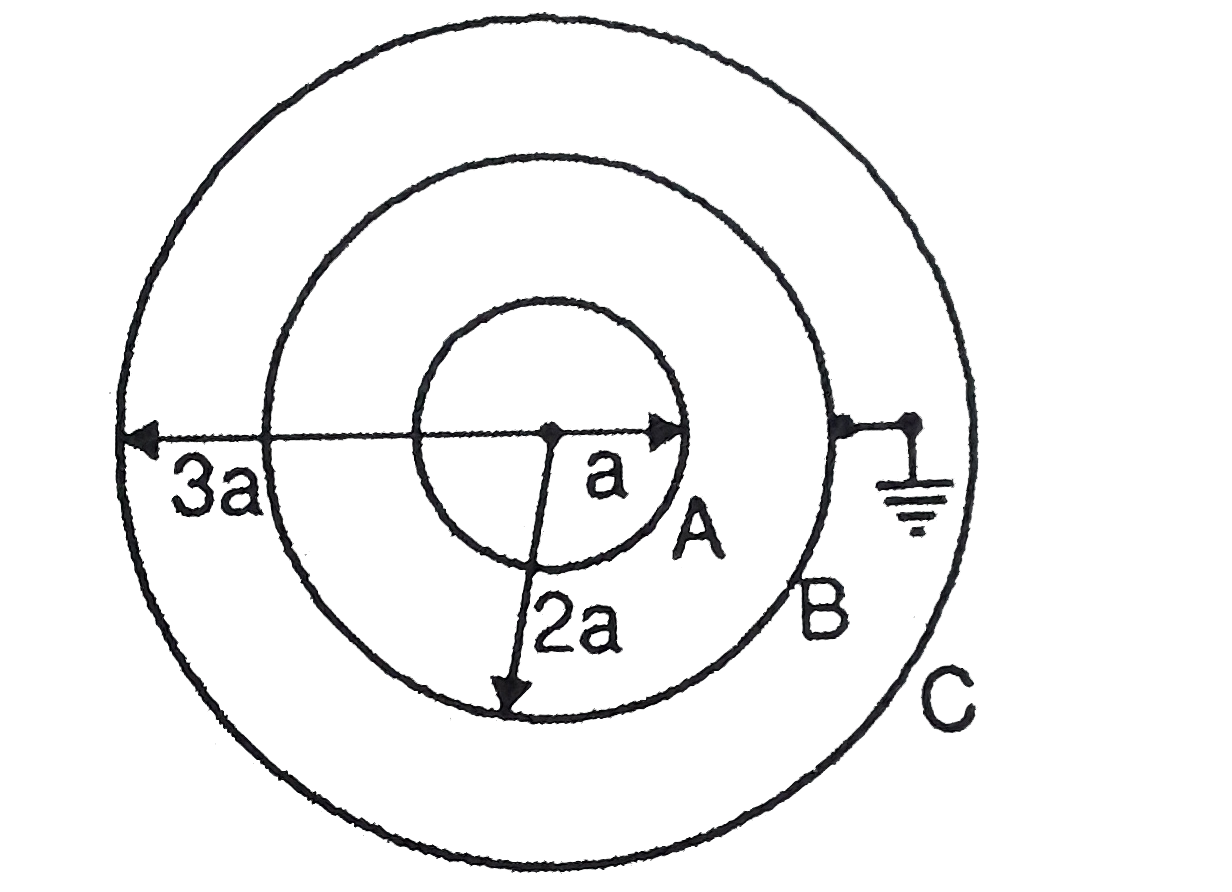
View SolutionThere are three conecentric hollow spheres of radii a, b and c and they are charged with charges q1,q2 and q3 respectively. Calculate the potential of the spheres.
View SolutionFigure shows three concentric thin conducting spherical shells A, B and C of radii R, 2R and 3R. The shell B is earthed A and C are given charges q and 2q respectively. Find the charges appearing on all the surface of A,B and C.
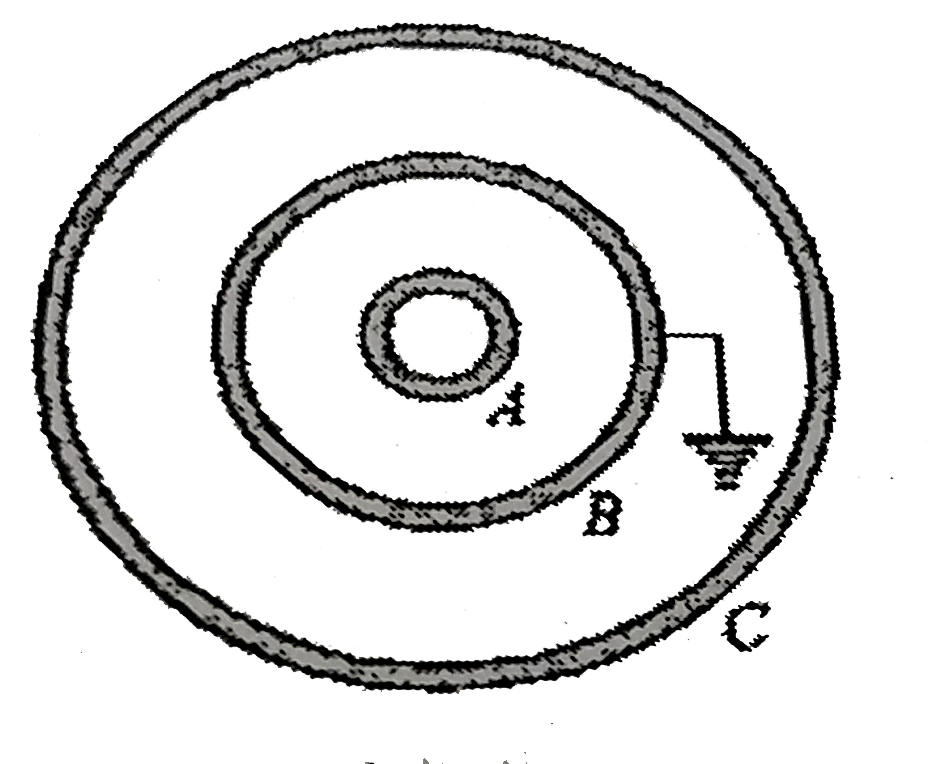
[inner surface (A)0,(B)−q,(C)43q
Outer surface (A)q,(B)−43q,(C)23q]
View SolutionThere are two concentric conducting spherical shells of radius rA and rB respectively (rB=2rA). If the inner shell is given a charge Q and outer shell is given a charge 2Q, then the potential difference between the surfaces of the shells will be K=14πε0
View SolutionThree concentric metallic spherical shells A,B and C of radii a,band c(a<b<c) have surface charge densities −σ,+σand -sigma respectively,thepotentialofshellA is
View Solution
